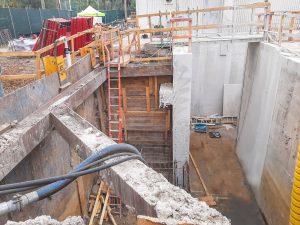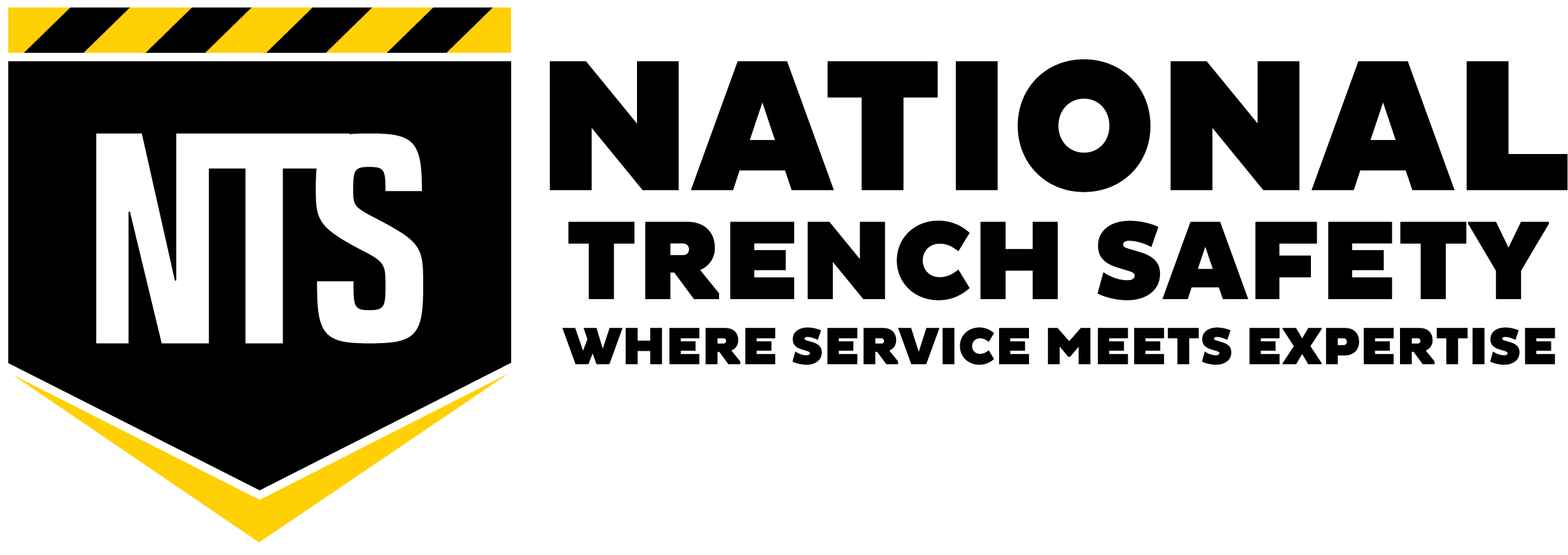Site-Specific Beam And Plate Shoring System Paired With Wood Lagging Shines During Pump Station Renovation
A nationwide contractor was tasked with rehabilitating an aging pump station that has been serving the community since the early 1980s. The pump station handles almost a quarter of the city’s wastewater. The planned overhaul would involve constructing a new concrete addition to increase the capacity of the existing wastewater wet well. The contractor would require an excavation cut with irregular dimensions arriving at a depth of 20-ft. The Competent Person on-site reported two classifications. The first reading classified the sandy, shell soil as C-60. The second reading was performed at a depth of 15-ft and was classified as B-Soil.
The contractor needed a shoring system with small footprint capabilities that could work in small areas and irregular-shaped excavations. The shoring system would also need to support a depth of 15-ft of lime rock and protect an existing 24-inch bypass piping adjacent to the excavation. After a careful analysis, the contractor selected a site-specific Beam and Plate shoring system with timber lagging. Beam and Plate shoring systems are site-specific solutions designed for those irregular-sized projects capable of providing large free-span work areas.
The beam and plate system can address projects with one to four irregular-sided excavations. The contractor began the beam and plate installation by utilizing a crane to move steel components to their determined position. A vibratory hammer was used to drive the steel piles to a depth of 28-ft, ensuring a minimum embedment depth of 8-ft into the firm lime rock below. Steel plates were placed between the steel piles and also driven to depth via a vibratory hammer. The site was then excavated to a depth of about 3-ft to install static beam wales and struts. The excavation would then slowly progress in increments of 4-ft to allow the contractor to install the steel angle iron, anchors, and timber lagging to the existing concrete wall to the desired depth.
drive the steel piles to a depth of 28-ft, ensuring a minimum embedment depth of 8-ft into the firm lime rock below. Steel plates were placed between the steel piles and also driven to depth via a vibratory hammer. The site was then excavated to a depth of about 3-ft to install static beam wales and struts. The excavation would then slowly progress in increments of 4-ft to allow the contractor to install the steel angle iron, anchors, and timber lagging to the existing concrete wall to the desired depth.
With the site-specific shoring system fully installed, the contractor began to form and pour the new concrete additions. While pouring the concrete, the contractor had to take a measured approach to ensure the welded static brace did not affect the formwork. Once the pump station is fully operational, it will improve stormwater capacity and distribution to the area. The contractor was pleased with the site-specific shoring system designed by the in-house NTS Engineering team and the support offered by the local sales representative. Having the proper site-specific system tailored to meet the project demands pays big dividends that can provide cost savings, minimize liability, and increase efficiency.






